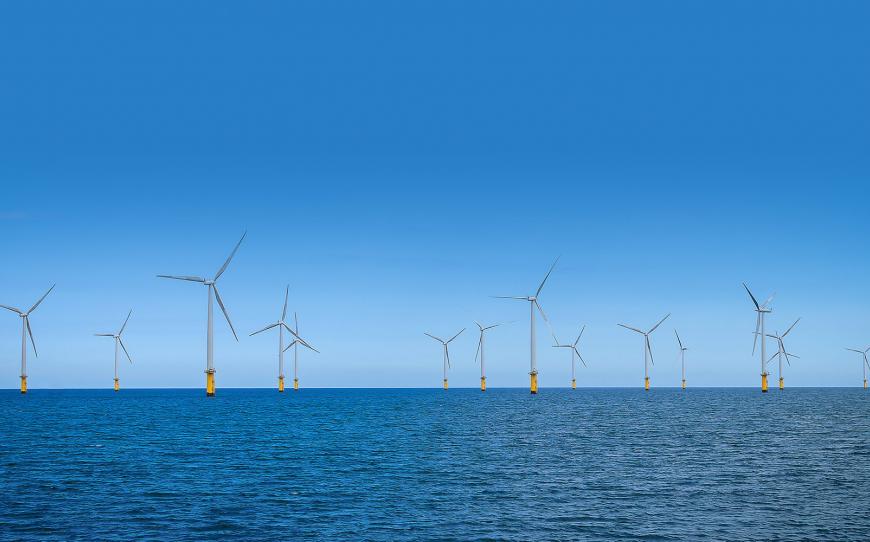The aim of the Magnus Effect was to build a scale offshore wind jacket, to promote renewable energies, in particular wind and marine energy, among VET students.
Target Audience: VET Teachers & students at Centro Integrado de Formacion Profesional (CIFP) Someso. Local companies will play a consultant role in this Pilot Experience providing feedback about its development.
Methodology
The purpose for this Pilot Experience was the application, in an educational environment, of new systems of manufacturing and construction existing in the field of the offshore metal construction towards the promotion of green renewable energy.
The construction of an offshore structure was replicated according to industry standards and procedures but in an educational environment. Automated robot welding and innovative NDT (non-destructive testing) was used in this Pilot Experience, within the welding processes and procedures, in order to align with the new technologies driving Industry 4.0.
A prototype of a windmill turbine was built, which showed students the Magnus Effect concept. Lectures for VET students and teachers focused on technologies and applications and complemented the practical activities.

Steps of the Magnus Effect Pilot Experience
The innovative aspect of this Pilot Experience was the close collaboration between institutions, i.e. shipyards, auxiliary companies and the VET centre, which allowed direct knowledge transfer from industry to the next generation of workers. Local industrial partners from the shipbuilding sector were keen to collaborate with VET education centres. However, companies within the shipbuilding sector were also contacted throughout Europe.
Topics
This Pilot Experience addressed the shipbuilding and offshore renewable energy sectors as more recently, offshore wind energy structures are typically manufactured in local shipyards. The production of offshore jackets provides shipyards with new manufacturing opportunities and enables them to widen their scope. This is made possible due to the similarities in the manufacturing processes and it enables them to them take advantage of the existing synergies between both types of products: ships and offshore structures. This activity can have an important impact on local economies. For example, located nearby the CIFP Someso’ VET centre a large shipyard which had previously experienced a long period of underuse and low workload has in recent years turned to offshore jacket production.
Course instructors
- Jose Luis Souto, CIFP, Someso
- Francisco Sánchez Naya, CIFP, Someso
MATES ‘Strategy Baseline Report’ Lines Of Actions being addressed
The MATES Strategy Baseline report consists of results which were obtained from the extensive work carried out by the MATES partners; workshops with experts, Delphi questionnaires, desk-top studies and surveys. This report synthesises the MATES strategy baseline to bridge the skills gap between training offers and the industry demands in the Maritime Technologies value chain. The full report can be accessed here. Below are the Lines of Actions identified in the report (see pages 17 and 18) which the Magnus Effect addresses (SB = shipbuilding, ORE = offshore renewable energy):
- SB1: Training, reskilling/ upskilling workforce in the use of digital and data driven technologies (big data, Internet of Things, cloud computing, 3D printing, artificial intelligence)
- SB5: Promoting a better matching of trainings to current needs in technical disciplines (electrical systems, beam welding and various other techniques like gas metal arc welding, gas tungsten arc welding and oxyacetylene welding, fitting and cutting)
- SB6: Progressive introduction and increasing relevance of 21st century skills within the training offer (“Soft skills” e.g. creative thinking and innovation, critical thinking and problem solving, communication and collaboration, knowledge management and transfer, flexibility and adaptability, initiative and self-direction, productivity and accountability).
- SB8: Enhancing visibility and promoting STEM women in the shipbuilding sector.
- ORE3: Develop synergies among sectors with significant similarities in their needs to promote skills transferability between them (e.g. Oil and gas, offshore wind energy, ocean energy)
- ORE8: Need for specialization and expertise in skills that are not yet standardised and are still under development e.g. Decommissioning
- ORE10 Promote/ enhance 21st Century skills: adapted to the different needs of ‘blue collar’ and “white collar” roles: teamwork, communication, analytical skills. (Also referred to as soft skills, and including capacities such as creative thinking and innovation, critical thinking and problem solving, communication and collaboration, knowledge management and transfer, flexibility and adaptability, initiative and self-direction, productivity and accountability).
Stakeholders involved
- ROBOT PLUS S.L.
- AXENCIA GALEGA DE INNOVACIÓN
- NERVIÓN INDUSTRIES GRUPO AMPER
- ACEBRÓN GROUP
- INDASA
- TMG
Educational material
The "AIRLESS" VR tool was developed with the UNITY 3D tool. The user has to put it on the HTC Vive googles and with the control is able to paint a structure on a real scale immersed in a scenario that replicates the Navantia Fene facilities, where offshore wind jackets are manufactured.
The VR tool not only faithfully represents the painting process graphically, but also there is a code underneath that collects all the information (times, the painting speeds, the trigger tightening %, the distance from the gun to the piece as well as the angle between the two, the paint consumption, etc.) from the simulation and save it. So, the trainer can assess the performance of each student, and the student can improve his/her painting skills on large metal structures.
This tool was fed with real data provided by the company INDASA, which on the one hand provided data on painting techniques, materials, consumption and on the other hand carried out the simulator validation tests. From their point of view, The AIRLESS VR tool represents their daily work very well, according to the words of its manager Jorge Silveira.
Access to the "AIRLESS" VR tool

